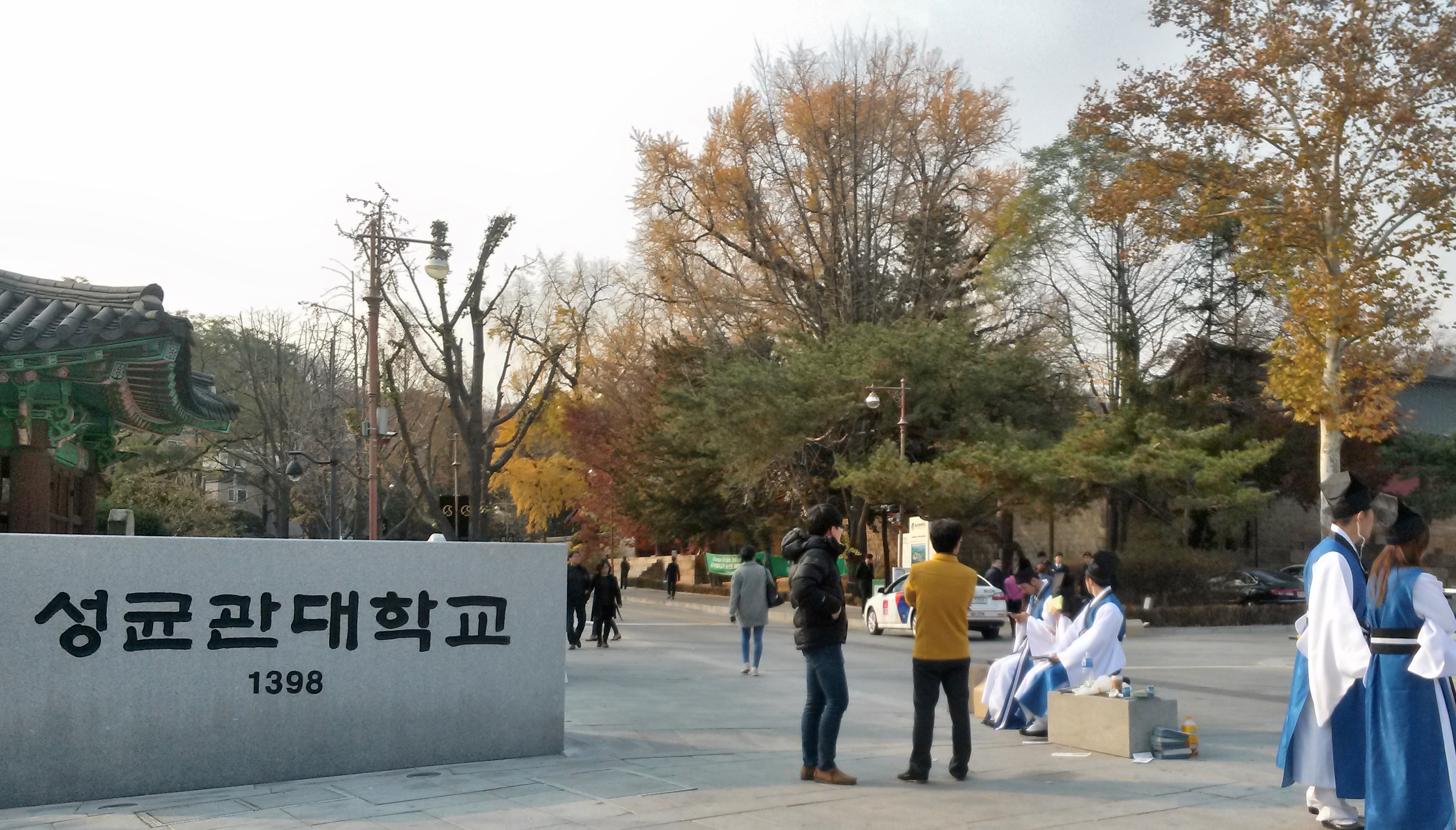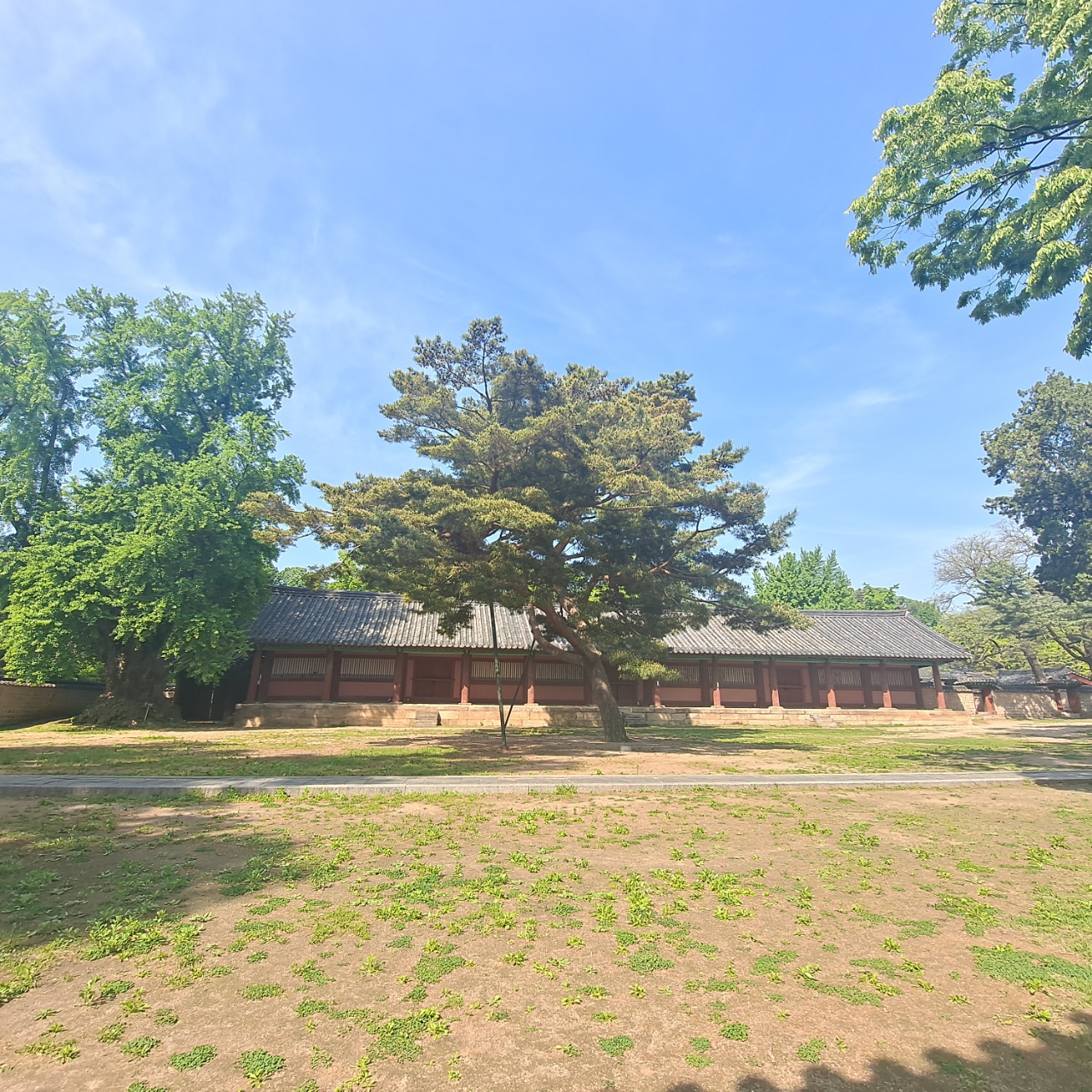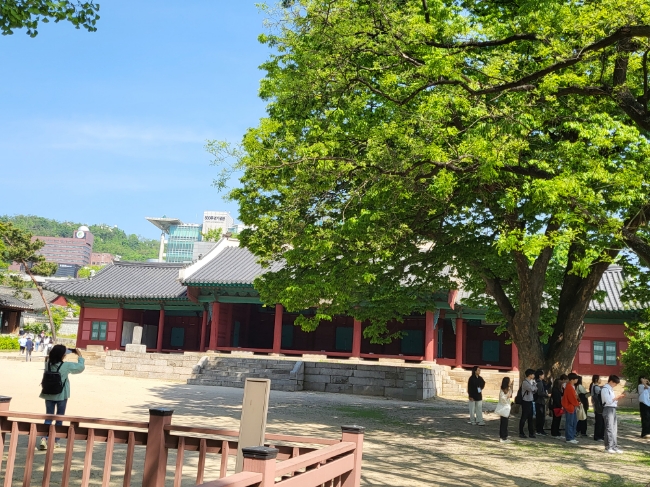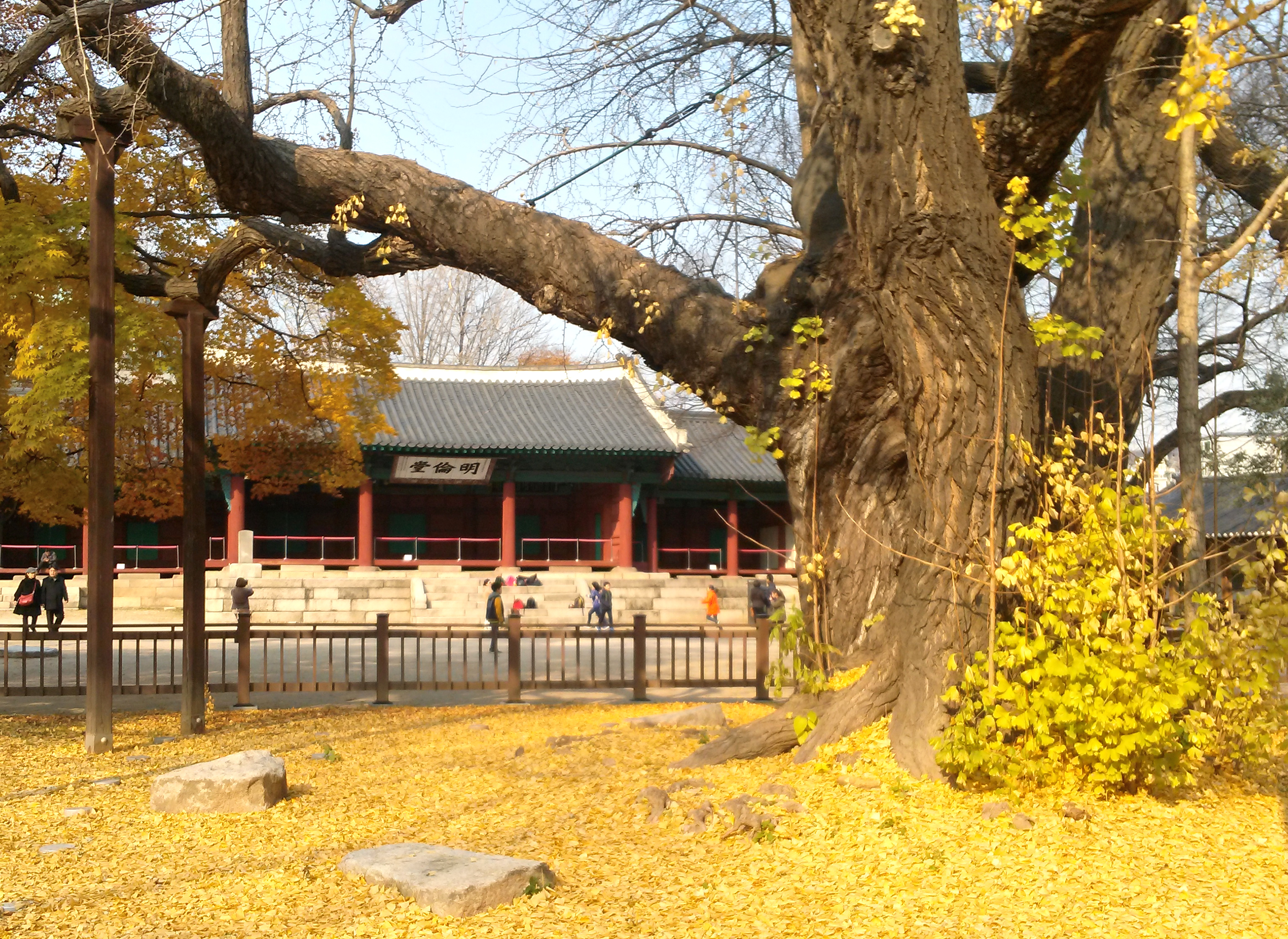 코스 스팟
Course Spot
코스 스팟
Course Spot
 스팟 정보
Spot Infomation
스팟 정보
Spot Infomation




Video - KOR
성균관 문묘
문묘란 공자를 모신 사당이다. 당나라 때 공자가 문선왕(文宣王)으로 추봉됨에 따라 문선왕묘라고 불리다 원나라 이후 문묘라 불리게 되었다. 중국에서는 한나라에서 유학을 정치이념으로 채택하면서 공자를 모시는 국가적 규모의 제사가 행해졌다.
우리나라 공자 사당의 유래는 통일신라 시대에 김수충이 당나라에서 공자와 그 제자들의 화상을 가지고 돌아와 왕명에 의해 국학에 모신 것에서 비롯되었다. 고려 시대에도 중국의 제도에 따라 국자감에서 제례가 행해졌으며 조선 시대에 들어와 제도와 운영이 더욱 정비되었다.
중앙에는 성균관, 지방에는 향교에 문묘가 세워졌는데, 현재 성균관대학교의 문묘는 1398년(태조 7년)에 완성되었고 임진왜란 때 불에 탔으나 1601년(선조 34년)에 중건하고 이후 중수를 거듭한 것이다. 대표 건축물로는 대성전과 명륜당을 들 수 있지만 그 밖에도 전사청, 제기고, 향청, 존경각, 육일각 등 다양한 부속 건물들이 있다.
우리나라 공자 사당의 유래는 통일신라 시대에 김수충이 당나라에서 공자와 그 제자들의 화상을 가지고 돌아와 왕명에 의해 국학에 모신 것에서 비롯되었다. 고려 시대에도 중국의 제도에 따라 국자감에서 제례가 행해졌으며 조선 시대에 들어와 제도와 운영이 더욱 정비되었다.
중앙에는 성균관, 지방에는 향교에 문묘가 세워졌는데, 현재 성균관대학교의 문묘는 1398년(태조 7년)에 완성되었고 임진왜란 때 불에 탔으나 1601년(선조 34년)에 중건하고 이후 중수를 거듭한 것이다. 대표 건축물로는 대성전과 명륜당을 들 수 있지만 그 밖에도 전사청, 제기고, 향청, 존경각, 육일각 등 다양한 부속 건물들이 있다.
Munmyo Shrine
Munmyo is a shrine dedicated to Confucius. During the Tang dynasty, Confucius was revered as King Mun-seon, so it was called King Mun-seon’s tomb, and after the Yuan dynasty, it was called Mun-myo. In China, as the Han Dynasty adopted Confucianism as a political ideology, a national rite was held to venerate Confucius.
The origin of the Confucius shrine in Korea comes from the fact that during the Unified Silla era, Kim Su-chung brought images of Confucius and his disciples from Tang Dynasty and enshrined them in Guk-hak by the order of the king. Even in the Goryeo Dynasty, according to the Chinese system, rituals were held at Guk-ja-gam, and in the Joseon Dynasty, the system and operation were further improved.
Sung-gyun-gwan was built in the capital and in Hyang-gyo in the provinces. Currently, the shrine at Sung-gyun-gwan University was completed in 1398 (the 7th year of King Taejo). Daeseongjeon and Myeongryundang are representative buildings, but there are also various annexed buildings such as Jeon-sa-cheong, Je-gi-go, Hyang_cheong, Jon-gyeong-gak, and Yuk-il-gak.
The origin of the Confucius shrine in Korea comes from the fact that during the Unified Silla era, Kim Su-chung brought images of Confucius and his disciples from Tang Dynasty and enshrined them in Guk-hak by the order of the king. Even in the Goryeo Dynasty, according to the Chinese system, rituals were held at Guk-ja-gam, and in the Joseon Dynasty, the system and operation were further improved.
Sung-gyun-gwan was built in the capital and in Hyang-gyo in the provinces. Currently, the shrine at Sung-gyun-gwan University was completed in 1398 (the 7th year of King Taejo). Daeseongjeon and Myeongryundang are representative buildings, but there are also various annexed buildings such as Jeon-sa-cheong, Je-gi-go, Hyang_cheong, Jon-gyeong-gak, and Yuk-il-gak.
ⅹ
